Ikegami ISD-A10 Handleiding
Ikegami
Bewakingscamera
ISD-A10
Bekijk gratis de handleiding van Ikegami ISD-A10 (2 pagina’s), behorend tot de categorie Bewakingscamera. Deze gids werd als nuttig beoordeeld door 27 mensen en kreeg gemiddeld 4.3 sterren uit 14 reviews. Heb je een vraag over Ikegami ISD-A10 of wil je andere gebruikers van dit product iets vragen? Stel een vraag
Pagina 1/2

Ikegami Tsushinki Co., Ltd.
INSTRUCTION MANUAL
MODEL
ISD-A10
COLOR CAMERA
OUTDOOR USE WARNING
WARNING – TO PREVENT FIRE OR
ELECTRIC SHOCK, DO NOT
EXPOSED THIS APPLIANCE TO
RAIN OR MOISTURE.
Ikegami Electronics (U.S.A.), Inc.
37 Brook Avenue, Maywood, New Jersey 07607, U.S.A.
Phone: (201) 368-9171, FAX 201-569-1626
Ikegami Electronics (Europe) GmbH
Ikegami Strasse 1, 41460 Neuss 1, F.R. Germany
TEL. 02131-123-0/FAX 02131-102820
Ikegami Electronics (Europe) GmbH U.K. Branch
Unit E1 Cologne Court Brooklands Close, Windmill Road
Sunbury-on-Thames Middlesex TW16 7EB, UK
TEL. 01932-769700/FAX 01-92-769710
K36089
The exclamation point within an equilateral triangle is intended to alert
the user to the presence of important operating and maintenance
(servicing) instructions in the literature accompanying the appliance.
NOTE: This equipment has been tested and found to comply with the limits
for a Class A digital device, pursuant to Part 15 of the FCC Rules. These limits
are designed to provide reasonable protection against harmful interference
when the equipment is operated in a commercial environment. This
equipment generates, uses and can radiate radio frequency energy and, if not
installed and used in accordance with the instruction manual, may cause
harmful interference to radio communications. Operation of this equipment in
a residential area is likely to cause harmful interference in which case the user
will be required to correct the interference at his own expense.
CAUTION; ANY CHANGES OR MODIFICATIONS NOT EXPRESSLY
APPROVED BY THE PART RESPONSIBLE FOR COMPLIANCE COULD
VOID THE USERS AUTHORITY TO OPERATE THE EQUIPMENT.
Thank you very much for your wise choice of the Ikegami DPS
Camera. Please carefully read this Instruction Manual to keep your
camera at full capacity.
This DPS camera is equipped with a 1/3" WDR digital image device.
Instructions for Disposal of Electric and Electronic
Equipment in Private Household
Disposal of used Electric and Electronic Equipment
(Applicable in the European Union and other
European countries with separate collection systems)
This symbol on the product, or in the related documents in the
package, indicates that this product shall not be treated as
normal household waste. Instead, it should be taken to a
proper applicable collection point or depot for the recycling of
electric and electronic equipment.
By ensuring this product is disposed of correctly, you will help prevent
possible negative consequences for the environment and human health,
which could otherwise be caused by inappropriate waste handling of this
product. The recycling of materials will help to conserve natural resources.
For more detailed information about recycling of this product, please contact
your local city authority, your household waste disposal service or the place
where you purchased the product.
1. Handling precautions
4. Names of par their functions
6.
Operation
5.
Connection
9.
Appearance View
8.
Specifications
7. Warranty and after-sale service
VIDEO OUT
LENS
MAX40mA
D
UERL
POWER
DC VIDEO
+–
CLASS 2
~
DC12V330mA
AC24V50/60Hz370mA
SE T U P
50
64
64 8.5
61.5
2-1/4"-20UNC
1"-32UN-2B
(1) Imaging device: 1/3-inch WDR digital imaging device
(2) No. of effective pixels: Approx. 380,000 pixels, 720(H) x 540(V)
(3) Scanning system: NTSC/PAL-compatible
(4) Sync system: INT/Line-Lock (phase adjustable)
(5) Video output: VBS 1.0 Vp-p/75 ohms
(6) Horizontal resolution: 480 TV lines
(7) S/N ratio: 50 dB (luminance signal, at rated illumination,
Detail OFF and Weight ON)
(8) Minimum subject
illumination: 1 lux/F1.4 (AGC ON)
0.03 lux/F1.4 (electronic sensitivity up x32)
(Light source color temperature 3100K, subject
reflectance 89.9%)
(9) AGC: ON (AGC, HYPER-AGC)/OFF (LOW, MID,
HIGH) selectable
(10) Electronic sensitivity up: Automatic (up to 32 times: interlocked with AGC
mode)
(11) White balance: ATW/ATWex/AWC/MANU selectable
(12) WDR function: Variable at 36 levels
(13) Iris level: Adjustable
(14) Camera ID: Up to 24 characters (alphanumeric and symbols)
(15) Power supply: AC 24 V 10% (50/60 Hz), DC 12 V (10.5-15 V)±
(16) Power consumption: Approx. 5.2 W
(17) Ambient operating
temperature: -10 to +50 C°
(18) Camera mount: 1/4" -20UNC (top and bottom mountable)
(19) Outer dimensions: 64(W) x 64(H) x 61.5(D) mm
(20) Weight: Approx. 350 g
(21) Input/output connectors: • VIDEO OUT; BNC
• LENS; 4P (applicable plug E4-191J-150 or
equivalent)
• AC24V/DC12V input; 2P push-in terminal
(22) Accessories: • Instruction Manual, 1 copy
• Lens connector plug, 1 pc. (PAL system) (E4-
191J-150 or equivalent)
* Specifications and design are subject to change for product improvements
without notice.
• Do not install the camera in a water-splashed or highly humid place.
• Do not use the camera where the ambient temperature drops below -10 C or °
rises above +50 C. The images and component parts may be adversely °
affected or the camera may get in trouble.
• Never open the case of the camera because there are precision parts inside.
Otherwise a trouble or accident may result.
• Donotputanythingmetallicandotherforeignsubstancesthroughthevent.A
trouble,fireorelectricshockmayresult.
• Be sure to turn off the power before installing or making connections.
•Donotinstallthecamerainplacesexposedtovibrationsandshocks.
• Be very careful not to drop or shock the camera while carrying it in.
• Do not touch the imaging device
• Do not orient the camera to the sun.
• Some types of lenses may cause hunting, light amount drop or other
problems. In such case, readjust the lenses.
* Because of the digital image device characteristics, images may look rugged
at high temperatures. This does not mean the camera is in trouble.
2. General
This color camera is provided with a 1/3-inch approximate wide dynamic range
(WDR) digital image device. It features WDR, high sensitivity and high
resolution, and is equipped with many functions such as backlight
compensation, automatic iris control and line lock. The camera is best suited
for being set up at ATMs and being housed in other systems. General CCTV
lenses can also be employed, which enables the camera for general-purpose
monitoring.
Up Switch (U) Used to select SETUP items (up and down).
Down Switch (D)
Right Switch (R) Used to modify the settings.
Left Switch (L)
Enter Switch (E) Used to enter and quit the setup mode and to save
the settings.
* To enter the setup mode, hold down the E button longer than 2 seconds.
6-3. Entering the setup mode and its basics
6-3-1. SETUP MENU (Main menu)
Hold down the E button longer
than 2 seconds, and the menu at
left appears onscreen. A
highlighted item is now selected.
(1) CAMERA ID
Up to 24 characters can be displayed onscreen.
(2) LIGHT CONTROL
The backlight compensation and spot photometry modes are selected. The
wide dynamic level and DC type iris lens are adjusted.
(3) GAIN
The gain control and electronic sensitivity up modes are selected. The
electronic sensitivity multiplying factor is also selected.
(4) WHITE BALANCE
The white balance mode is selected. The manual white balance settings are made.
(5) SYNC
The sync systems (INT and LL) are selected and set up.
(6) MENU LOCK
The saved settings can be locked.
(7) SETUP
The EXIT, CANCEL or RESET action is selected and executed.
EXIT: Used to save the settings and to quit the menu.
CANCEL: Used to return the settings to the previously saved ones.
RESET: Used to return the settings to the factory ones.
* New settings are not saved if EXIT is selected to quit the menu.
3. Features
(1) Wide dynamic range (WDR)
The WDR function provides for backlight compensation in a wide dynamic
range. Being shot even in wide-illumination-fluctuating spots, bright-and-
dark subjects can be captured clearly and in a natural look.
(2) Automatic white balance
Thanks to the automatic follow-up white balance control (ATW), the white
balance adjusts itself no matter how greatly the subject's color temperature
fluctuates.
(3) High-quality picture and high resolution
The camera is designed for low smear level and low noise. The DSP
(Digital Signal Processor) effectively enhances details, which achieves
crisp and sharp images with high signal-to-noise ratio. The high resolution
is backed up by a horizontal resolution of 480 TV lines and a vertical
resolution of 400 TV lines.
(4) High sensitivity
Various modes of automatic gain control (AGC) are available to finely
adjust the camera settings depending on the subject's illumination
conditions. With the AGC and slow shutter in combination, high sensitivities
of up to 0.03 lux/F1.4 are achieved.
(5) Camera setup function
The control buttons on the back of the camera enable to change and save
the camera's settings.
(6) Two-way automatic iris control
This function is available to switch between video type iris lens and DC
type iris lens. In other words, almost all types of CCTV automatic iris
lenses can be employed.
(7) The flange focal distance adjusting mechanism makes it easy to readjust
the focus tracking when a zoom lens is used.
Lens mount (CS mount)
This is used to mount the lens on the camera. Many types of CS mountlens can
be attached.
Focus lock screw (2 locations)
Used to mechanically fix the CS mount after adjusting the camera’s flange
focal distance. To adjust the distance, turn the CS mount and move it to and
from until a desired distance is obtained. The two lock screws are positioned
90 to each other on top.°
Holder mounting screw holes
These holes are used to fix the camera on the camera holder. They are also
applicable to general tripods.
Note:To attach the camera on a tripod or a camera holder, be sure to use
mounting screws.
(1/4" -20UNC) that are shorter than 5.5 mm.
Video output terminal (VIDEO OUT)
Used for the video signal output, this terminal is connected to the video input
terminal of a monitor, switcher or the like. (To be terminated with a 75-ohm
impedance)
Auto iris lens connector (LENS)
The connector is specifically used to connect the auto iris lens.
¥ For the video type auto iris lens
Set the lens selector switch to VIDEO position.
— Connector cable leads —
1. Red (power)
2. Not used
3. White (video)
4. Black (shielded)
* Dress the tip of the green lead to prevent a short-circuit.
¥ For the DC type auto iris lens
Set the lens selector switch to DC position.
— Connector cable leads —
1. Damping coil (-)
2. Damping coil (+)
3. Driving coil (+)
4. Driving coil (-)
* Connect the leads as shown above.
Refer also to the instructions of the lens.
Lens selector switch
The switch has two positions, for a video iris lens and a DC iris lens.
- Camera setup function switches
Refer to the Operation chapter.
Power indicator (POWER)
The LED indicator stays on in green while the camera power is on.
DC12V/AC24V power input terminal
Keep the input power at DC10.5-15.0 V or AC24V 10% ±
*This installation should be made by a qualified service person and should
conform to all local codes.
Auto iris lens
3
2
1
4
Auto iris lens
3
2
1
4
3
2
1
4
Numbers of connector pins
ISD-A10 VCR MONITOR
D
UE
RL
SET UP
SETUP MENU
→CAMERA ID OFF
LIGHT CONTROL
GAIN
WHITE BALANCE ATW
SYNC INT
MENU LOCK OFF
SETUP EXIT
SETUP MENU
→CAMERA ID OFF
LIGHT CONTROL
GAIN
WHITE BALANCE ATW
SYNC INT
MENU LOCK OFF
SETUP EXIT
ID EDIT
→ID
□□□□□□□□□□□□□□□□□□□□□□□□
ID ALL CLEAR
ID POSITION UP
CHAR. COLOR WHITE
BACK COLOR GRAY
RET
WHITE BALANCE
→R GAIN I―――――I―――――I
B GAIN I―――――I―――――I
RET
SPECIAL MENU V1.00
→VIDEO STANDARD
COLOR BAR
CHROMA I―――――I―――――I
DETAIL I―――――I―――――I
SETUP 0 IRE
RET
SELECT VIDEO STANDARD
→VIDEO STANDARD NTSC
RET
SYNC LL
→PHASE I―――――I―――――I
+90DEG
RET
LIGHT CONTROL
→BACKLIGHT CMP. OFF
W.DYNAMIC I―――――I―――――I
IRIS LEVEL I―――――I―――――I
RET
GAIN CONTROL
→GAIN AGC
SENS UP OFF
SLOW SHUTTER x2
RET
1SPOT ZONE
→ADJUST ZONE
RET
SPECIAL MENU V1.00
→VIDEO STANDARD
COLOR BAR
CHROMA I―――――I―――――I
DETAIL I―――――I―――――I
SETUP 0 IRE
RET
WARRNING!!
If the setting of the
video standard is changed,
all the settings are
initialized.
Do you change the setting?
→CANCEL
OK
6-3-2. SPECIAL MENU
Highlight EXIT on the SETUP
MENU screen. Hold down the L
and R buttons together, and the
screen at left appears onscreen.
(1) VIDEO STANDARD Used to switch between the video signal systems
(NTSC/PAL).
(2) COLOR BAR Used to turn on and off the color bars.
(3) CHROMA Used to adjust the chroma level.
(4) DETAIL Used to adjust the details.
(5) SETUP Used to select the setup levels (0 IRE and 7.5 IRE).
(6) RET Used to go back to the main menu screen.
6-4. Setup procedures
6-4-1. CAMERA ID
(1) CAMERA ID ON/OFF setting
Highlight CAMERA ID. Using the
E, L or R button, access the
ON/OFF setting. Decide the ON
or OFF setting with the L or R
button.
(2) ID characters setting
Keep CAMERA ID highlighted
and press the E button. The
screen at right shows up.
ID
Press the E button on ID, and
the cursor appears. With the
L or R button, select a
character. Press the E button
to save it, and the character
box advances to the next
one. To delete a character,
press the E button to go
through the code and place
the cursor in the character to delete. Press the L or R button to get the box
blank.
ID ALL CLEAR
Highlight this item and press the E button. The ID code is cleared.
ID POSITION
Highlight this item and press the L or R button. In this way, the ID code can
be positioned up or down.
CHAR. COLOR
Highlight this item and the press the L or R button to choose from four
character colors: white, transparent, gray and magenta.
BACK COLOR
Highlight this item and the press the L or R button to choose from four
background colors.
RET
Press the E button to go back to the main menu screen.
6-4-2. LIGHT CONTROL
(1) Select LIGHT CONTROL on
the main menu screen. Press
the E button, and the screen at
right shows up.
* The IRIS LEVEL item appears
only when the lens selector
switch at the camera's back is
set at DC.
(2) BACKLIGHT CMP.
Highlight this item and the
backlight compensation modes
can be selected (ON, 1SPOT,
2SPOT and OFF).
ON
Usual backlight
compensation is made.
1SPOT
Select 1SPOT and press the
E button. Press the E button again on ADJUST ZONE, and the photometric
field setting screen shows up. Each time the E button is pressed, the
photometric frame color turns blue, green and red in this order
• Blue
Using the U, D, L or R
button, the field can be
moved wherever you like.
• Green
Using the U, D, L or R
button, the field can be
enlarged.
• Red
Using the U, D, L or R
button, the field can be
reduced.
* To quit the field setting screen, hold down the E button longer than 2
seconds. Once the 1SPOT ZONE screen appears, select RET and press
the E button. The previous menu shows up.
2SPOT
As with the 1SPOT mode, two photometric fields can be preset. Take the
same procedure as for the 1SPOT mode.
OFF
The backlight compensation function is off.
(3) W. DYNAMIC
The wide dynamic level can be varied with the L and R buttons. The
intermediate level is initially set. In shooting scenes with greatly fluctuating light
quantities, move the marker to the right to get a higher effect. Position the
marker while watching an actual scene.
(4) IRIS LEVEL
This item appears when the DC type iris lens is in use. Move the marker to the
right, and the aperture is reduced (images get darker). Position the marker
while watching an actual scene.
(5) RET
Press the E button to go back to the main menu screen.
6-4-3. GAIN
(1) Select GAIN on the main menu
screen. Press the E button, and
the screen at right shows up.
(2) GAIN
With the L and R buttons, the
gain control modes can be
selected.
AGC
This mode is initially set to
automatically optimize the
sensitivity and noise levels.
HYP-AGC
This mode is higher in sensitivity than AGC. But images may look rugged at
higher sensitivities.
LOW
This fixed-gain mode keeps the sensitivity low for brighter spots.
MID
This fixed-gain mode keeps the sensitivity middle between HIGH and LOW.
HIGH
The fixed-gain mode keeps the sensitivity high for darker spots.
(3) SENS UP
The electronic sensitivity up modes can be selected with the L and R buttons.
At all the positions but OFF, the automatic gain control function turns on itself.
The HYP-AGC mode can also be switched on.
OFF (initial setting)
S/N
The signal-to-noise ratio priority mode is used in shooting subjects that vary
in brightness and move slightly.
STD
The standard mode is used in shooting subjects in brightness-changing
spots to suppress both blurry images and rugged looks.
MOVE
The motion priority mode is used in shooting subjects that vary in
brightness and move greatly like on the street and in parking lots.
* Note: With the sensitivity multiplying factor at maximum, the motion-dependent
blurriness and ruggedness look the same in all the 3 modes.
(4) SLOW SHUTTER
The electronic sensitivity multiplying factor can be adjusted with the L and R
buttons.
x2, x4, x8, x16, x32
The higher the factor, the higher the sensitivity, but motions at maximum factor
look unnatural.
6-4-4. WHITE BALANCE
The white balance mode is selected. The manual white balance settings are
made.
(1) The white balance modes can be switched with the L and R buttons.
ATW (initial setting)
White balance is automatically followed up.
ATW Ex
White balance is automatically followed up, but the color temperature range
gets higher than the ATW mode. Compared with the ATW mode, color
fading may be caused under usual light sources.
AWC
This is the so-called one-push automatic white balance control. Shoot a
target white subject and press the E button, and the white balance will be
adjusted.
MANUAL
Select MANUAL, press the
E button and the screen at
left appears onscreen.
R GAIN is used to adjust the
reddish shades.
B GAIN is used to adjust the
bluish shades.
6-4-5. SYNC
(1) The INT and LL modes can be
selected with the L and R buttons.
(2) INT
The internal sync mode is selected.
(3) LL
The line lock mode is selected. Press the E button, and the screen at right
shows up.
PHASE
With the L or R button,
move the marker to finely
adjust the phase.
+90DEG
With the E button, the phase
angle can be adjusted to 0 , °
90 , 180 or 270 in the ° ° °
increment of 90 .°
RET
Used to go back to the main
menu screen.
* The LL mode is not effective when the camera is on DC power.
6-4-6. MENU LOCK
The menu lock function protects saved settings against accidental modifications.
(1) Locking
Get the saved settings locked with the L and R buttons.
(2) Operation
When locked, EXIT alone is effective and all the other actions are inoperative.
(3) Unlocking
Press the U, R, D, L, U, D and E buttons in this order. If a wrong button is
pressed halfway, start all over again.
6-4-6. SPECIAL MENU
(1) Highlight SETUP on the main
menu screen and hold down the
L and R buttons together. The
SPECIAL MENU screen at right
shows up.
(2) VIDEO STANDARD
The video signal systems
(NTSC/PAL) are switched here.
Select VIDEO STANDARD,
press thee button and the
warning screen at right shows
up.
CANCEL: Used to go back to
the SPECIAL MENU screen.
OK: Used to go to the
SELECT VIDEO
STANDARD screen. (See at
right.)
Highlight VIDEO
STANDARD. With the L or
R button, the NTSC and
PAL systems can be
switched each other.
* Each time another system
is selected, the current
settings will be back to their factory ones.
* Select RET, and the SPECIAL MENU screen reappears.
(3) COLOR BAR
Press the E button to get the color bars displayed. Press the E button again to
go back to the SPECIAL MENU screen.
(4) CHROMA
With the L and R buttons, the chroma level can be adjusted. Make the
adjustment to your desired level while watching an image onscreen.
(5) DETAIL
With the L and R buttons, the details can be adjusted. Make the adjustment to
your taste while watching an image onscreen.
(6) SETUP
With the L and R buttons, the setup level can be selected: 0 IRE and 7.5 IRE.
(7) RET
Used to go back to the main menu screen.
VIDEO OUT
LENS
MAX40mA
D
UERL
POWER
DC VIDEO
+–
CLASS 2
~
DC12V330mA
AC24V50/60Hz370mA
SE T UP
1
4
7 8
11
9
10
13
5
6 12
23
Back View
Video output connector (VIDEO OUT)
• This is the output connector of video signal.
• The connector is used to connect the video camera to the video input
connector of a monitor, switcher or the like. (To be connected with 75-ohm
impedance)
• Use a coaxial cable for connection.
(Typical connections)
6-1. User setup
This camera can be user-set for picture quality, sync control, IDs, etc. The
SETUP MENU comes in a tree format. The onscreen display of characters is
used to make various settings.
6-2. SETUP switches and their functions
The pushbuttons and their markings at left are provided on
the back of the camera.
SPOT ZONE−1 ENT:2SEC→RET
A warranty accompanies this product. Read and fill out the warranty card that you
have received at your dealer. Keep this card in a safe place.
•
Please consult Ikegami Electronics (U.S.A.) Inc. or Ikegami Electronics
(Europe) GmbH or your dealer for full warranty information. Your dealer will
repair or replace free of charge within the warranty period according to the
warranty coverage.
• For repairs after the expiration of the warranty period, consult your dealer or
sales representative. It will first be judged whether the trouble is repairable
or not. Charged servicing will then be made upon request of the user.
• Before you ask for servicing, take trouble of reading the Instruction Manual. If
the unit still fails, take note of the model number, date of purchase, problem,
etc. in detail, and inform your dealer or sales representative.
• If you have questions about the after-sale service, contact your dealer or sales
representative.
* We suggest you ask for preventive inspection earlier.
Back View

U
D
L R
TOP 3RD 4TH2ND
TOP 3RD 4TH2ND
10.
Setup tree
U
D
L R U
D
U
D
E
L R L R
SETUP MENU
E BUTTON
HELD DOWN
+URDLUDE
CAMERA ID OFF
ID *ID EDIT
ID ALL CLEAR
ID POSITION
CHAR COLOR
*ID ALL CLEAR
UP
DOWN
WHITE
TRANSPARENT
GRAY
MAGENTA
BACK COLOR WHITE
TRANSPARENT
GRAY
MAGENTA
ON +E
+E
RET
LIGHT CONTROL
BACKLIGHT CMP.
OFF
W.DYNAMIC *ADJUST
IRIS LEVEL *ADJUST
ON
+E1SPOT
+E
+EADJUST ZONE
+ERET
*SPOT ZONE
+E2SPOT +E
ADJUST ZONE-1
+E
ADJUST ZONE-2
+ERET
+E
+E
+E
RET
*SPOT ZONE
*SPOT ZONE
*ADJUST
*ADJUST
*ADJUST
*ADJUST
*
COLOR BAR ON/OFF
+E
GAIN GAIN LOW
MID
HIGH
AGC
HYP-AGC
SENS UP OFF
S/N
STD
MOVE
SLOW SHUTTER x2
x4
x8
x16
x32
+ERET
+ERET
+E
WHITE BALANCE
ATW
ATW Ex
SYNC INT
MENU LOCK OFF
LL
AWC *
AUTO FOLLOW-UP
ON
MANUAL R GAIN
B GAIN
+ERET
+ERET
+E
RET
+E
SETUP EXIT *SAVE AND EXIT
+E
CANCEL *BACK TO PREVIOUS SETTINGS
+E
RESET *BACK TO FACTORY SETTINGS
L & R
BUTTONS
HELD DOWN
+E
SPECIAL MENU +E
+E
PHASE
+90DEG
+E
+E
VIDEO STANDARD
COLOR BAR
*ADJUSTCHROMA
*ADJUSTDETAIL
0 IRE
7.5IRE
SETUP
VIDEO STANDARD
NTSC
PAL
Product specificaties
| Merk: | Ikegami |
| Categorie: | Bewakingscamera |
| Model: | ISD-A10 |
Heb je hulp nodig?
Als je hulp nodig hebt met Ikegami ISD-A10 stel dan hieronder een vraag en andere gebruikers zullen je antwoorden
Handleiding Bewakingscamera Ikegami

17 Januari 2024

17 Januari 2024

17 Januari 2024

17 Januari 2024

17 Januari 2024

17 Januari 2024

16 Januari 2024

16 Januari 2024

16 Januari 2024

16 Januari 2024
Handleiding Bewakingscamera
- Monoprice
- KlikaanKlikuit
- Planet
- Kerbl
- Panasonic
- Airlive
- Buffalo
- Perel
- Gembird
- Night Owl
- Indexa
- Caliber
- Security Labs
- Syscom
- Toshiba
Nieuwste handleidingen voor Bewakingscamera
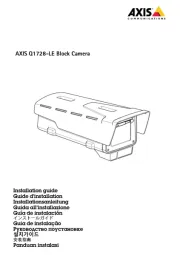
29 Juli 2025
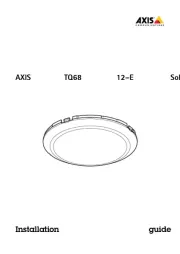
29 Juli 2025
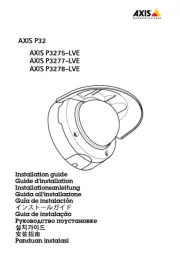
29 Juli 2025
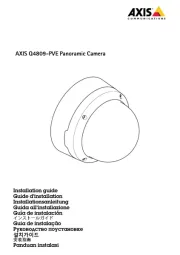
29 Juli 2025

29 Juli 2025
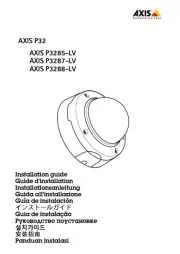
29 Juli 2025
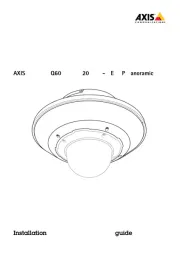
29 Juli 2025
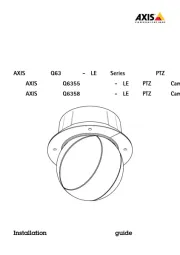
29 Juli 2025
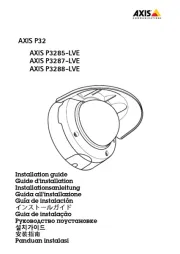
29 Juli 2025
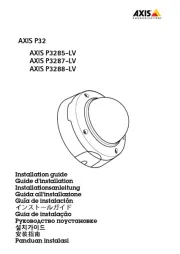
29 Juli 2025